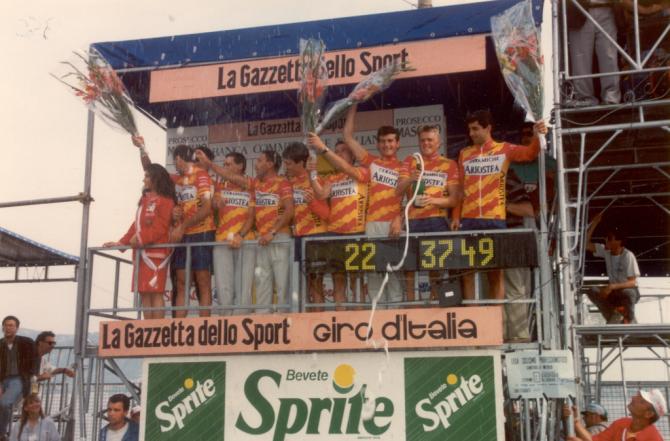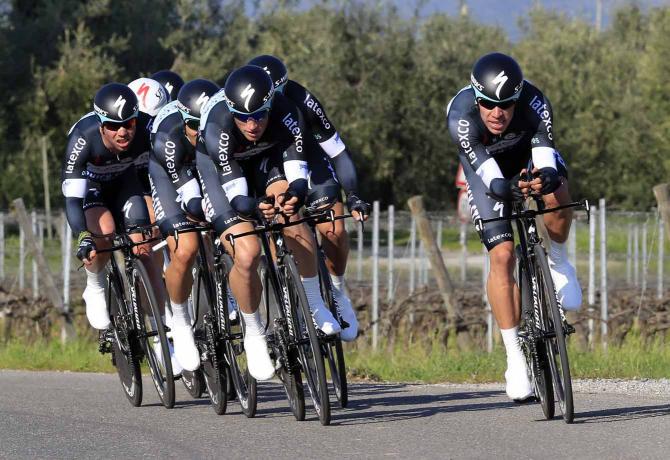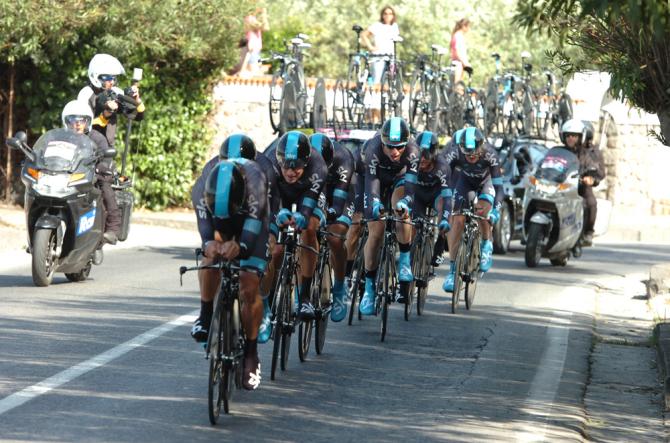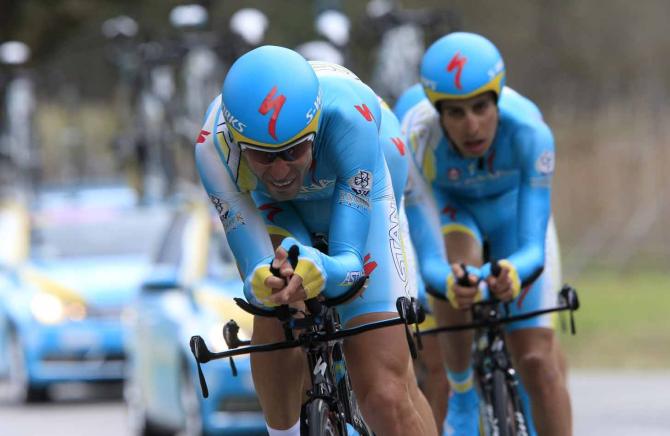Giro d'Italia: Team Time Trial Preview
Giro Countdown: 1 day to Belfast




For the first time since 2011, the Giro d'Italia will have a team time trial stage to kick off the race - but if that doesn't sound surprising, the team time trial is hardly going to be held in the 'usual' Giro terrain. Rather, the route will all be part of the Giro's first ever visit to the British Isles, with some 100,000 fans expected to flock to the roadside on Saturday afternoon in Belfast to celebrate what is a very special occasion.
Curiously enough, though, in some ways the 2014 Giro's opening stage is very similar to the 19.3 kilometre team time trial which kicked off the 2011 Giro d'Italia in Turin. That too was held on broad, well-surfaced inner city roads - back in 2011 after a short dash through the countryside between the nearby dormitory town of Venaria and Turin - was not overly technical either and, like in Belfast too, had few major changes of gradient.
Very similar in length to the Turin TTT, - 21.7 kilometres - the radical difference in background is noticeable from the word go, though, given that rather than a Renaissance palace like in Venaria, the 2014 opening stage kicks off in the shadow of the "Titanic Belfast" centre: this building is one of Ireland's most important tourist attractions, covering the history from start to tragic finish of the doomed liner, which was built in the early twentieth century in the nearby Belfast shipyards.
Titanic Belfast is built to the exact same height as the original vessel, too - and just a stone's throw away from where what was arguably the most famous ship in the world was constructed. So its four interconnected 'hulls', which house the Titanic Centre, will tower over the 2014 Giro d'Italia riders as they set off on the first leg of their 3,449 kilometre journey to Dublin, Bari and - eventually - Trieste in Italy's most easterly region.
After leaving the Belfast Titanic quarter, the route - held throughout on well-surfaced, smooth roads - quickly doubles back on itself and passes the Titanic 'Quarter' again on its right. It then uses wide, gently rising, 'A' roads for another 270 degree turn before settling on a steady eastwards direction heading for several kilometres along the Newtownards Road, one of East Belfast's main 'arterial' routes and usually busy with traffic.
The earliest sector past the Titanic and Belfast's famous shipyards is fairly open and exposed. But the Newtownards Roads is the complete opposite: rising very gently as it heads away from the docks and in a straight line between low terraced housing, anything but a direct head or tailwind is unlikely to affect the riders. Their attention may be distracted, though, by the sight of the political 'Murals' on some of the buildings' walls on either sides of the road, not to mention the teams flashinging back in the opposite direction on the far side of the same street, on the return leg of the TTT from Stormont.
Subcribe to the Cyclingnews YouTube channel here
The latest race content, interviews, features, reviews and expert buying guides, direct to your inbox!
Following the Murals, the early part of the TTT contains a few more reminders of Northern Irish politics when after six kilometres the race route swings abruptly left into Stormont Estate and the Parliament Buildings, where the Northern Ireland Assembly (Northern Ireland's government) - meets.
A huge neo-Classical construction set on the edge of East Belfast in beautiful park grounds, the riders will make their one serious ascent of the TTT on the road leading up right to the front of the Parliament Buildings.
In terms of actual vertical climbing, a bare 35 metres in altitude and less than a kilometre long, this will probably do little more than stretch out the squads. But the line of riders straining over the bars as they climb upwards above the parklands' main grounds towards Stormont will almost certainly be one of the most memorable images of the race's first stage.
With no time to admire the stunning view over Belfast from the summit - as the riders take a right turn above Stormont - it's to their backs, anyway, it's the 400 yard drop back down that may well do more damage.
The technical, twisting back road through the Stormont Park that returns the teams to the return leg along Newtownards could well play havoc with any poorly organised teams, particularly if there are crashes - and with well over half the time trial to go, any favourites caught out there could pay a high price.
Another fast blast along the Newtownards road - where one of Belfast's oldest bike shops, opened in 1978 by former World Championships and Commonwealth Games racer Dave Kane was already festooned with Giro memorabilia in late January and there is even a restaurant, Il Pirata, dedicated to Marco Pantani - then follows. By this point, we're up to 13 kilometres out of the TTT's total of 21.7.
Finally for its last eight kilometres the course first swings left south for a flat run alongside Stranmillis Embankment and Belfast's main river, the Lagan. (Keep an eye out for the high, redbricked walls of the nearby Lyric Theatre - where Liam Neeson made his acting debut.)
Halfway through this final segment, though, a sharp near-hairpin righthand turn with about four kilometres to go then sees the riders tackle a second, much steadier power climb away from the river up to Belfast Queens University.
An equally fast drop on the near-straight University Road then follows back to the city centre, prior to a last rightangled turn at Wellington Place which leads onto the 300 metre finishing straight at Belfast City Hall - and the victory ceremony for the 2014 Giro's first leader.
Overall, the TTT's results are not likely to have a huge impact on the race - back in 2011 at Turin, 18 of the 23 Giro 2011 teams finished at less than a minute of winners HTC, with most between 30 and 60 seconds slower.
However, the Belfast course is technical enough - and fast enough - to make any favourites, who have a crash or puncture, possibly lose significant amounts of time, as happened to the Katusha squad and Joaquim Rodriguez in 2011, when the Russian outfit finished 64 seconds back on HTC. Without that time loss, Purito would have been only a handful of seconds off a podium finish. Could it happen again to another Giro favourite? Don't rule it out.
The other big difference to Turin, apart from the Stormont climb, is the weather - far more unpredictable in this part of Europe than in Italy. If it rains it could render the Irish road surfaces very dangerous and will make team cohesiveness, vital to a TTT, much more of a challenge. The differences on Saturday, though, will likely be measured in seconds, whereas on the following day's 200 kilometre trek along the challenging beauty of northern Ireland's dramatically rugged coastline, though, any setbacks caused by bad weather could be measured in minutes.
Alasdair Fotheringham has been reporting on cycling since 1991. He has covered every Tour de France since 1992 bar one, as well as numerous other bike races of all shapes and sizes, ranging from the Olympic Games in 2008 to the now sadly defunct Subida a Urkiola hill climb in Spain. As well as working for Cyclingnews, he has also written for The Independent, The Guardian, ProCycling, The Express and Reuters.
